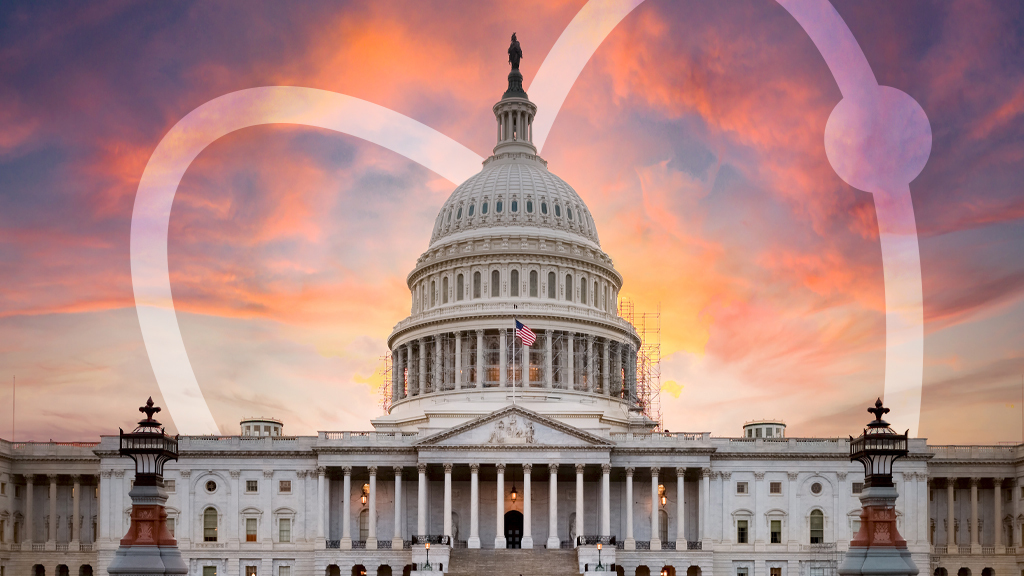NSTA Legislative Update
Appropriations Update: Department of Education
By NSTA Legislative Affairs & Advocacy Team
Posted on 2025-09-16

Disclaimer: The views expressed in this blog post are those of the author(s) and do not necessarily reflect the official position of the National Science Teaching Association (NSTA).
Last week, the House Appropriations Committee passed its fiscal year (FY) 2026 Labor-Health and Human Services-Education bill on a partisan vote, and as expected, the bill has dramatic cuts to education programs.
The House bill matches the President’s requested cut of $12.4 billion (roughly 16%) to Department of Education (ED) funding, but it rejects the Administration’s plan to consolidate K– 12 programs. It provides about $184.5 billion in discretionary funding, which means that reductions and program eliminations will occur across major education accounts.
In the House bill, Title I funding for disadvantaged students is cut by an estimated $4.7 billion. The Title II Supporting Effective Instruction State Grants program, which supports teacher professional development, was eliminated. Surprisingly, the House bill provides a $5 million increase for the Title IV, Part A program—the Student Support and Academic Enrichment grants, which provides a major source of funding for STEM education funding the program at $138 billion. Other programs that saw increases include Charter schools, up $60 million (13.6%); Special education, up $26 million (0.2%); Career and technical education state grants, up $25 million (1.7%); Indian education, up $5 million (2.6%); Rural education, up $5 million (2.3%); and Impact Aid, up $5 million (0.3%).
By contrast, the Senate Appropriations Committee advanced its own bipartisan education funding bill earlier in the summer, which set funding levels that generally sustained or modestly increased core federal education programs. In the Senate, Title I grants for disadvantaged students receive a small increase of roughly $50 million above the prior year’s allotment, bringing the total to about $18.46 billion. The Senate also maintains funding for Title II, and maintains the current funding level of $1.4 billion for Title IV, Part A. The 21st Century Community Learning Centers—a program dedicated to afterschool and summer learning—would see level funding of about $1.3 billion in both bills.
Advocates believe it is highly unlikely that the Congress will pass the FY 2026 bills before the October 1 deadline, and instead will rely on a Continuing Resolution that will keep the federal government funded (and open). Stay tuned.
National Science Foundation Funding Update
Last week, the National Science Foundation (NSF) announced a new grant solicitation for STEM education programs. This solicitation reflects the President’s FY 26 budget request to consolidate and significantly reduce funding for STEM education programs. Notably, the total anticipated amount of funding for the new program is only $30 million, compared to more than $100 million total for the funding for the four programs that the new grant guidelines cite as “archived” (government slang for canceled). These programs include the following:
- Advancing Informal STEM Learning (AISL)
- Computer Science for All (CSforALL)
- Discovery Research PreK–12 (DRK-12)
- Translation and Diffusion (TD)
The program estimates it will distribute a total of 40 awards, and the maximum award will be less than one-third of the amount it has been in the past.
NSTA is working with the STEM Education Coalition to urge Congressional appropriators to defend NSF education funding and clarify in statute that the Administration shall not unilaterally reprogram Congressionally appropriated funds.
If you want to join the campaign to ensure Congressional offices are hearing from constituents about this issue, click here.
NCES Releases New Math, Reading, Science Scores
In 2024, the average science score at eighth grade was four points lower compared to 2019’s science score and not significantly different from that of 2009, according to the National Center for Education Statistics (NCES)
Forty-five percent of high school seniors performed below the basic achievement level in math, the highest percentage since the test began in 2005. The average reading score for the nation at grade four was two points lower compared to 2022’s score and five points lower compared to 2019’s score.
Read more about the science assessment here.
White House Launches the AI Challenge
The Presidential AI Challenge aims to foster interest and expertise in artificial intelligence (AI) technology in America's youth. Early training in the responsible use of AI tools will demystify this technology and prepare America’s students to be confident participants in the AI-assisted workforce, propelling the nation to new heights of scientific innovation and economic achievement.
Student participants will complete a project that involves the study, development, or use of an AI method or tool to address community challenges, while educators will focus on creative approaches to teaching or using AI technologies in K–12 learning. Learn more here.
Join the Monthly ‘STEM Talk’
For just 30 minutes on the first Thursday of each month, educators are invited to join experts from across the STEM landscape as they provide factual information, practical strategies, and actionable resources to help them navigate the ever-changing world of science and STEM education, policy, and advocacy.
Hosted by the Afterschool STEM Hub, STEM Education Coalition, STEM Ecosystems, and Teaching Institute for Excellence in STEM (TIES), The STEM Talk creates a safe space for dialogue while maintaining a focus on information that matters to educators and the communities they serve.
This monthly pulse check will equip educators with the knowledge and tools needed to effectively champion science and STEM initiatives in today's dynamic environment.
Register today here.
For the latest advocacy and policy updates, be sure to check out our Legislative Updates blog series, which is featured in our e-newsletters, NSTA Reports, and NSTA Weekly. You can also access the articles directly on the NSTA Blog.
The mission of NSTA is to transform science education to benefit all through professional learning, partnerships, and advocacy.


